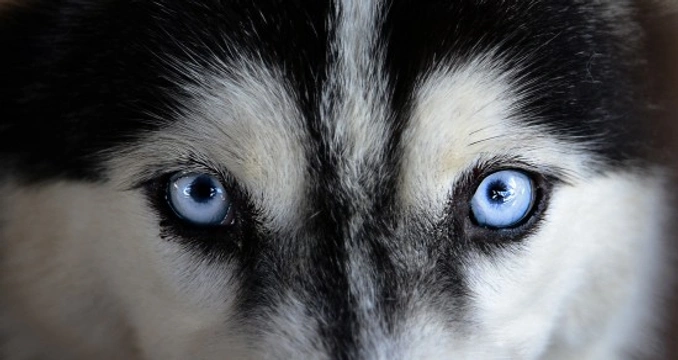
Cholesterol Deposits in Dog Eyes: Causes & Treatments
Cholesterol deposits in the eye of the dog appear in the form of white to grey spots that are oval or round in shape, and generally opaque. They are caused by an accumulation of lipids or fatty deposits in the cornea of the eye, made of cholesterol and the various proteins and chemical compounds that create cholesterol. Cholesterol deposits are also sometimes referred to as lipoid keratopathy, or corneal lipidosis.
Cholesterol deposits within the eye can obscure your dog’s vision and pose an irritation due to this reason, but they are not painful in and of themselves, and while they can be a sign of an underlying condition, are not a major problem in their own right. It is not definitively known why some dogs are apt to develop cholesterol deposits in their eyes, but some of the most common potential causes of the condition are listed below.
Hereditary factors
A hereditary eye condition called corneal dystrophy can lead to the formation of opaque cholesterol deposits in the eye, and certain breeds of dog are more prone to this condition than others. The Siberian husky, Cavalier King Charles spaniel, collie and beagle are just four of the most commonly afflicted breeds, but any breed or type of dog may potentially face the same problem.
As the condition is considered to be hereditary, it can be passed on down the line to subsequent litters, and so affected dogs should not be used for breeding.
Eye inflammations
Various secondary inflammatory conditions of the eyes, including keratoconjunctivitis, pannus, keratitis, or corneal trauma can all lead to a degeneration of the cornea of the eye, including the build-up of cholesterol deposits. Generally, the deposits will only appear in one eye when this is the case, and is most likely to occur in dogs over the age of ten as an age-related condition.
Systemic problems
Certain conditions can cause the body of the dog to be unable to metabolise lipids properly, leading to a lipid build-up in other areas of the body such as the eyes. High cholesterol in the dog or high triglycerides, as well as conditions such as hypothyroidism can lead to cholesterol deposits in the eyes, as can conditions such as Cushing’s disease, pancreatitis, diabetes and some hereditary health conditions.
Dogs that have cholesterol deposits in their eyes should be tested for the presence of an underlying health condition, which may be treatable or manageable with medication.
No obvious cause
If all of the potential causes above have been ruled out, you may simply have to live with the possibility that the condition is idiopathic, and that the root of the problem cannot be found. While this is not ideal as it provides nothing to work with in terms of improving the condition, it is the case in a reasonable amount of diagnosis of cholesterol deposits in the eyes of the dog.
Can cholesterol deposits be treated?
In and of themselves, cholesterol deposits tend to annoy the owner rather than the dog themselves, as they stop growing on their own when they reach a certain size, and will not necessarily obscure your dog’s vision. They are painless and should not cause irritation or soreness in and of themselves, and so the general course of action is to leave them alone, unless they are found to be obscuring your dog’s vision. However, if an underlying cause for the deposits can be found, this can often be treated.
Treatment of the underlying issue that is causing the deposits to build up is the only way to resolve them fully, other than surgically removing the deposits, which is generally considered to be unnecessary.
If your dog has elevated lipid levels, low-fat foods can help to keep the deposits in check and self-limiting in size. For thyroid problems, treatment with a synthetic thyroid hormone called thyroxine can correct the dog’s thyroid levels, and again, keep the deposits from worsening.
While the appearance of the deposits can be unsightly to some dog owners, surgical removal tends to be discouraged as it will not provide any marked improvement in the dog’s quality of life, unless the deposits are obscuring their vision. Even if the deposits are removed, they do have a tendency to recur unless the underlying issue is diagnosed and treated successfully.
If your dog’s eyes have undergone any changes, begun to develop cholesterol deposits or are otherwise giving you cause for concern, you should of course take your dog along to the vet for a diagnosis, as the underlying cause of the problem may be having other effects on your dog, and will need treatment. This will also allow your vet to put your mind at rest in terms of exactly what is going on with your dog’s eyes, and permit them to monitor the situation for any changes or worsening over time.



